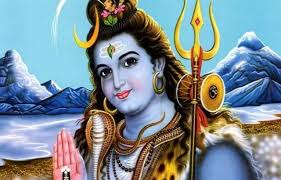


The god Shiva is one of the most important figures in the Hindu belief. His name literally means “the auspicious one”, but his most common epithet is “the destroyer”. He takes on many forms in Hindu scripture and is said to have 1008 names. One of the most common names for him is “Mahadeva”, meaning “great god”. Most commonly, he is seen as one third of the trimurti, the three holiest gods. He is one of the most complex and mysterious gods in the Hindu tradition because of his paradoxical nature.
Shiva is generally thought to have originated from Rudra, a god worshipped in the Indus Valley during the Vedic period. Rudra was a hunter and a storm god, and was very fierce in his ways. He was one of the main deities in the Vedic pantheon. Rudra’s father was the Lord of Beings and his mother was Usha, the Goddess of the Dawn. When he was born, he was not given a name, so he began to cry. He begged his father for a name and was granted “Rudra”, from the the word rud, meaning to weep or howl. Because of his tremendous powers as the storm god, “Rudra” is often translated as “the howler.” He was sometimes called “Shiva”, an adjective meaning “kind” as a euphemism. Gradually, the name Rudra became interchangeable with the name Shiva, and the modern Shiva was born.
Shiva has many titles and forms, and can be seen differently by every one of his worshippers. He is a part of the trimurti, a triad of the three most powerful Hindu gods. Brahma is “the creator”, Vishnu is “the preserver”, and Shiva is “the destroyer.” Together, they make up the cycle of the universe. While in Western thought, destruction is generally seen as a bad thing, “destruction in Hindu belief implies reproduction” (Iyengar). To Hindus, destruction is just a holy act necessary for new birth. It is often contested whether there is one member of the trimurti who is the most powerful. Some say it is Brahama, since he created the universe, and there are some legends that claim Vishnu to be the most powerful, but many argue it is Shiva, since he the power to destroy the universe. In one story, Brahman and Vishnu were arguing over which of them is the supreme god. Suddenly, a pillar of fire appeared before them. Brahman flew up to try and reach the top of the pillar, while Vishnu tunneled underground to find the base. When they met again, Brahman lied and told Vishnu that he had reached the top. Out of the pillar appeared Shiva, who reprimanded Brahman and declared himself to be the true god. This pillar symbolizes Shiva’s never-ending power and omnipresence in the universe. Some sects of Hinduism believe that Shiva himself is the Supreme Lord of reality, and he may be likened to Brahman.
One of Shiva’s other major titles is Nataraja, the god of dance. There are many icons of Shiva in his Nataraja form. He is usually depicted dancing alone inside a ring of flames, called a torana. This dance is the tândava. It is the angry dance of destruction that paves the way for creation. In depictions of this dance, he has four arms—one holds a damaru, or drum, that “emanates the creative energy of the universe”, while the another holds the flame of destruction (Cush). With the upper two arms, he offers abhaya, or protection, and he indicates salvation with the lower two. He stands with his left foot suspended while his right foot is standing on the demon of ignorance, Muyalaka. This is his dance of anger with which he has the power to destroy the universe. Shiva is also associated with the Lasya natana, a couples dance of peace and love. He performs this dance with his wife, Parvati. Both the tândava and the lasya natana make up “the cosmic dance of Shiva” (Williams).